Featured image credit: United Launch Alliance
Launch Window | July 01, 2022 – 22:00-July 02, 2022 – 00:00 UTC July 01, 18:00-20:00 EDT |
|---|---|
Mission Name | USSF-12 |
Launch Provider | United Launch Alliance (ULA) |
Customer | U.S. Space Force’s Space Systems Command (SSC) and the Department of Defense (DoD) |
Rocket | Atlas V 541 |
Launch Location | SLC-41, Cape Canaveral SFS, Florida, United States |
Payload mass | >4,100 kg (>9,040 lb) |
Where are the satellites going? | Geosynchronous orbit (GEO) |
Will they be attempting to recover the first stage? | No, Atlas V is not capable of recovery |
Where will the first stage land? | It will crash into the Atlantic Ocean |
Will they be attempting to recover the fairings? | No, Atlas V is not capable of recovery |
Are these fairings new? | Yes |
How’s the weather looking? | The weather is currently 50% GO for launch (as of July 01, 2022 – 20:36 UTC) |
This will be the: | – 9th flight of the Atlas V 541 configuration – 4th launch of ULA in 2022 – 78th Atlas V launch from Cape Canaveral – 151st ULA’s mission – 77th orbital launch attempt of 2022 |
Where to watch | ULA’s Official livestream |
What Does All This Mean?
United Launch Alliance (ULA) is launching two spacecrafts for the U.S. Space Force’s Space Systems Command (SSC) and the Department of Defense (DoD). This mission will see the use of an Atlas V 541 launching from Space Launch Complex 41 at Cape Canaveral Space Force Station in Florida, USA. On board of USSF-12 will be the Wide Field of View (WFOV) testbed for the SSC and the USSF-12 Ring spacecraft for the DoD’s Space Test Program (STP). Both satellites will be ferried directly into a geosynchronous orbit. This mission will mark ULA’s fourth launch in 2022, with OFT-2 being the third one back in May of 2022.

USSF-12
USSF-12’s primary payload is the U.S. Space Force’s SSC’s Wide Field of View (WFOV) testbed, with a secondary payload for the DoD’s STP.
Wide Field of View (WFOV) Testbed
The WFOV testbed is an Overhead Persistent Infrared (OPIR) technology demonstrator that will mature and prove the effectiveness of its 6-degree staring sensor called Wide-Area Six-Degree Payload (WASP). Developed by L3 Harris under a separate contract, WASP will be able to observe nearly one third of Earth’s surface. WFOV will be capable of performing strategic and tactical missions, such as battlespace awareness and missile warning, and directly supporting warfighters by monitoring Earth’s surface respectively. With pathfinding the process to operationalize OPIR data, the WFOV testbed will play an important role as part of the Missile Warning, Tracking, and Defense architecture.
The WFOV testbed is based on Millennium Space System’s Aquila M8 satellite bus. It has two deployable solar arrays offering a baseline payload power of 2500 W (options up to 10 kW), is powered by a bi-propellant propulsion system, and single or dual string avionics. The Aquila M8 satellite bus is Millennium Space System’s biggest satellite bus in their line-up, weighing ~3,000 kg with a payload accommodation of over 350 kg. It’s designed to operate 3 to 5 years on orbit.
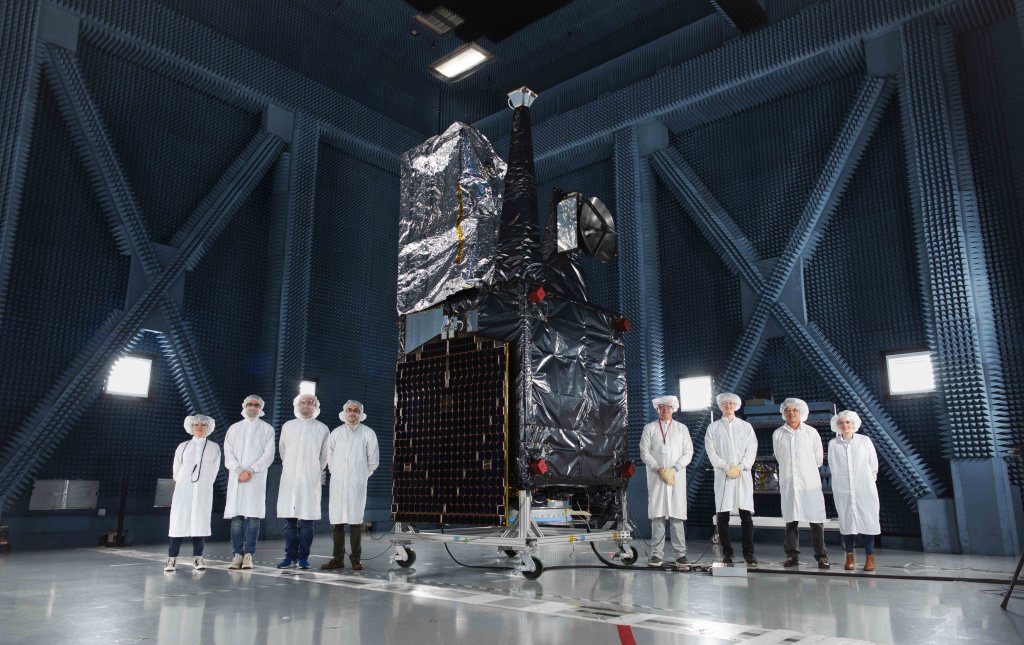
USSF-12 Ring Spacecraft
The secondary payload of the USSF-12 mission is an ESPA (EELV Secondary Payload Adapter) Star platform built by Northrop Grumman weighing 740-780 kg with room for up to six hosted or up to twelve deployable payloads. Each of the six payload slots is designed for payloads of around 320 kg (1,920 kg in total). It has a four-panel deployable solar array providing 1,200 W of power and a hydrazine based hypergolic propulsion system.
The USSF-12 Ring spacecraft is a classified mission that will demonstrate future technology for the DoD.
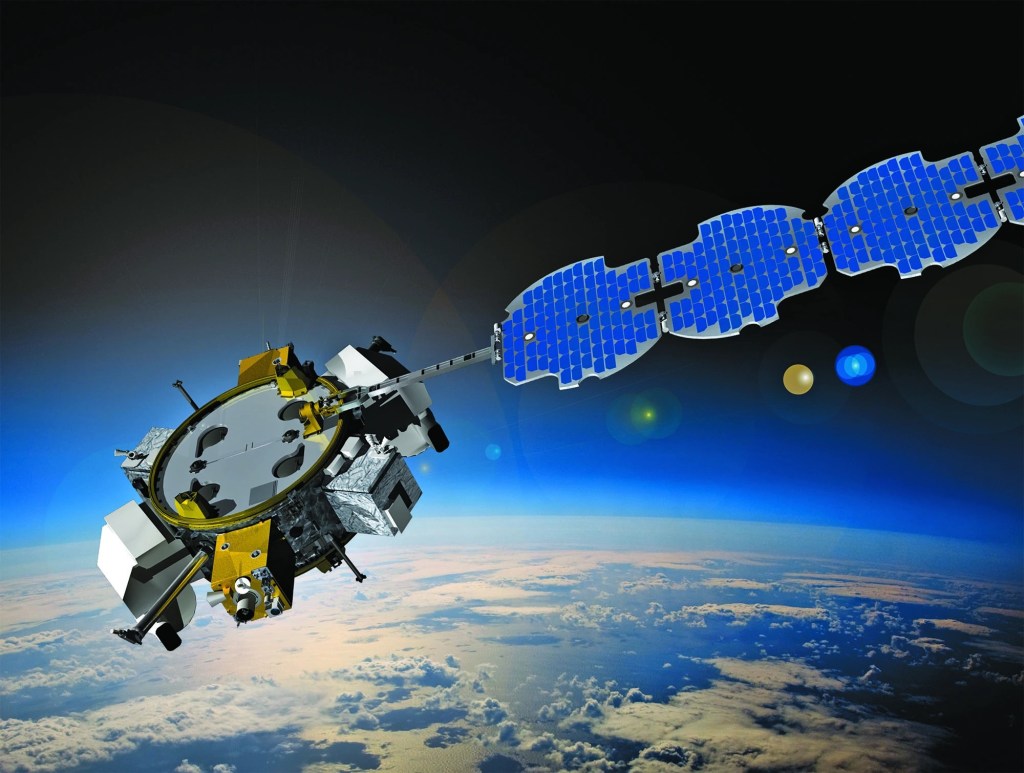
USSF-12 Mission Timeline
| Hrs:Min:Sec | Events |
| -0:00:01.0 | RD-180 engine ignition |
| +0:00:01.0 | Liftoff |
| +0:00:06.9 | Begin pitch/yaw maneuver |
| +0:00:57.8 | Mach 1 |
| +0:01:07.4 | Maximum dynamic pressure |
| +0:01:48.4 | Solid rocket booster jettison |
| +0:03:25.6 | Payload fairing jettison |
| +0:04:24.3 | Atlas booster engine cutoff (BECO) |
| +0:04:30.3 | Atlas Centaur separation |
| +0:04:40.2 | Centaur first main engine start (MES-1) |
| +0:10:58.2 | Centaur first main engine cutoff (MECO-1) |
| +0:23:13.6 | Centaur second main engine start (MES-2) |
| +0:28:41.9 | Centaur second main engine cutoff (MECO-2) |
| +5:43:54.1 | Centaur third main engine start (MES-3) |
| +5:46:20.0 | Centaur third main engine cutoff (MECO-3) |
| +5:49:36.0 | WFOV spacecraft separation |
| +5:59:03.0 | Booster adapter separation |
| +6:05:21.0 | USSF-12 ring spacecraft separation |
| +6:31:41.0 | Start blowdown |
| +7:06:41.0 | End of mission |
What Is The Atlas V?
The Atlas V is an expendable medium-lift launch system and member of the Atlas rocket family. The rocket has two stages. The first is a Common Core Booster (CCB), which is powered by a single RD-180 engine that burns kerosene (RP-1) and liquid oxygen (LOx). This is accompanied by up to five strap-on solid rocket boosters (SRB). The second stage is the Centaur upper stage, which is powered by one or two RL10 engines and burns liquid hydrogen (LH2) and liquid oxygen (LOx).
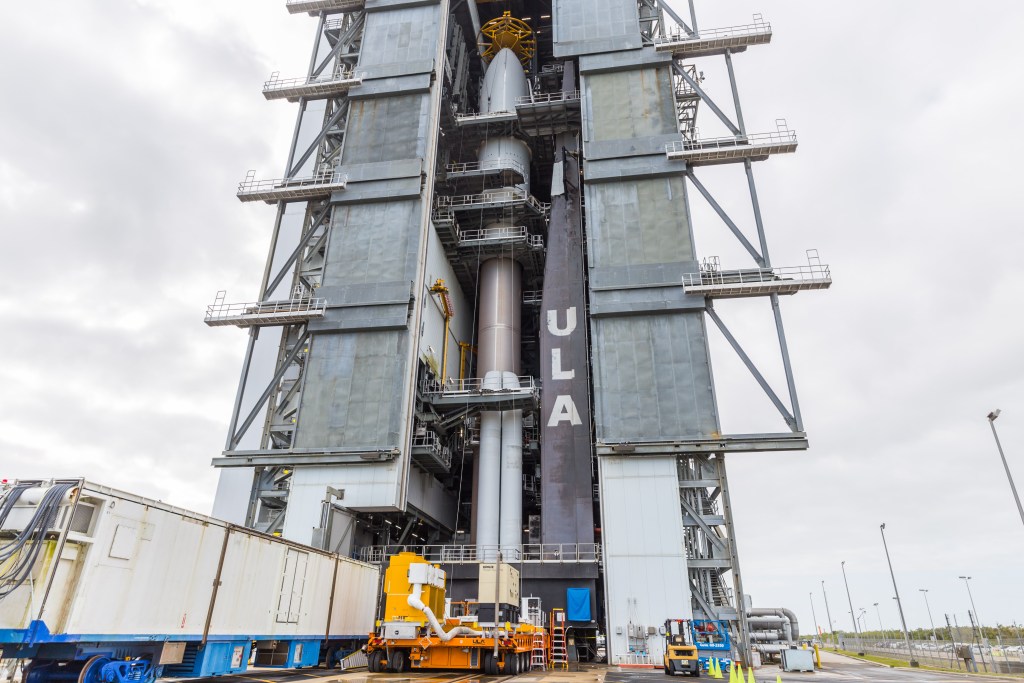
The CCB is 3.8 m (12.5 ft) in diameter and 32.5 m (106.5 ft) in length. This stage is capable of producing 3.83 MN (860,200 lb) of thrust at sea level. Each SRB can provide additional 1.6 MN (371,550 lb) of thrust. The Centaur second stage, in turn, is 3 m (10 ft) in diameter and 12.6 m (41.5 ft) in length and is capable of producing 101.8 kN (22,900 lb) of thrust.
What Does 541 Mean?
Atlas V rockets have a three number configuration code. The first number represents the fairing diameter size in meters. The second number denotes the number of solid rocket motors (SRMs), which attach to the base of the rocket. The number of SRMs for a 4 meter fairing can range from 0 – 3. However, the 5-meter fairing Atlas V can support up to 5 SRMs, due to the different aerodynamic properties of the fairing. For the GOES-T mission, there will be four SRM attached to the center core. The third number denotes the number of engines on the Centaur Upper Stage.



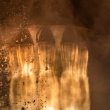

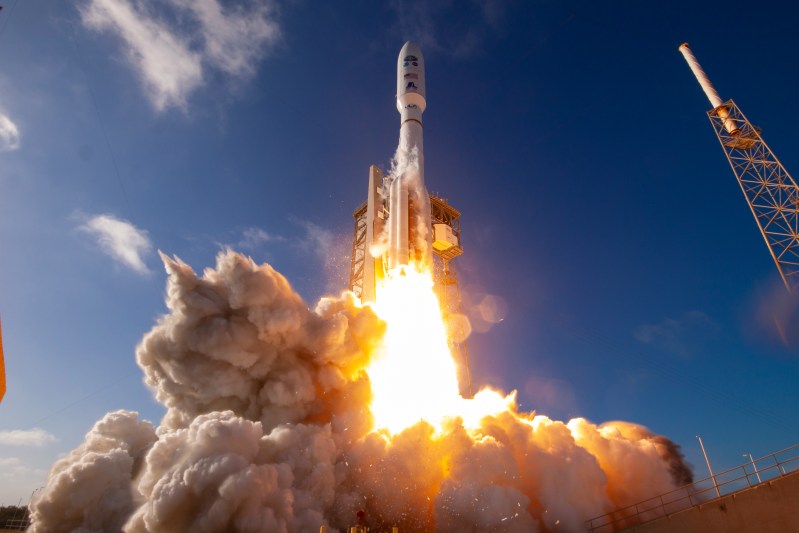
Excellent article, thank you. Have a pinch of salt and a bowl of punch for the first of the month.